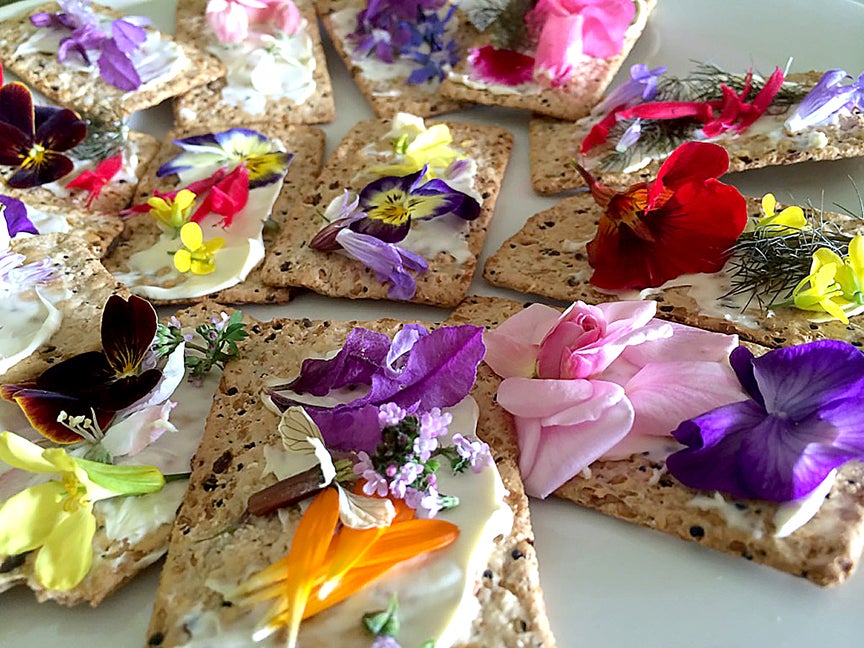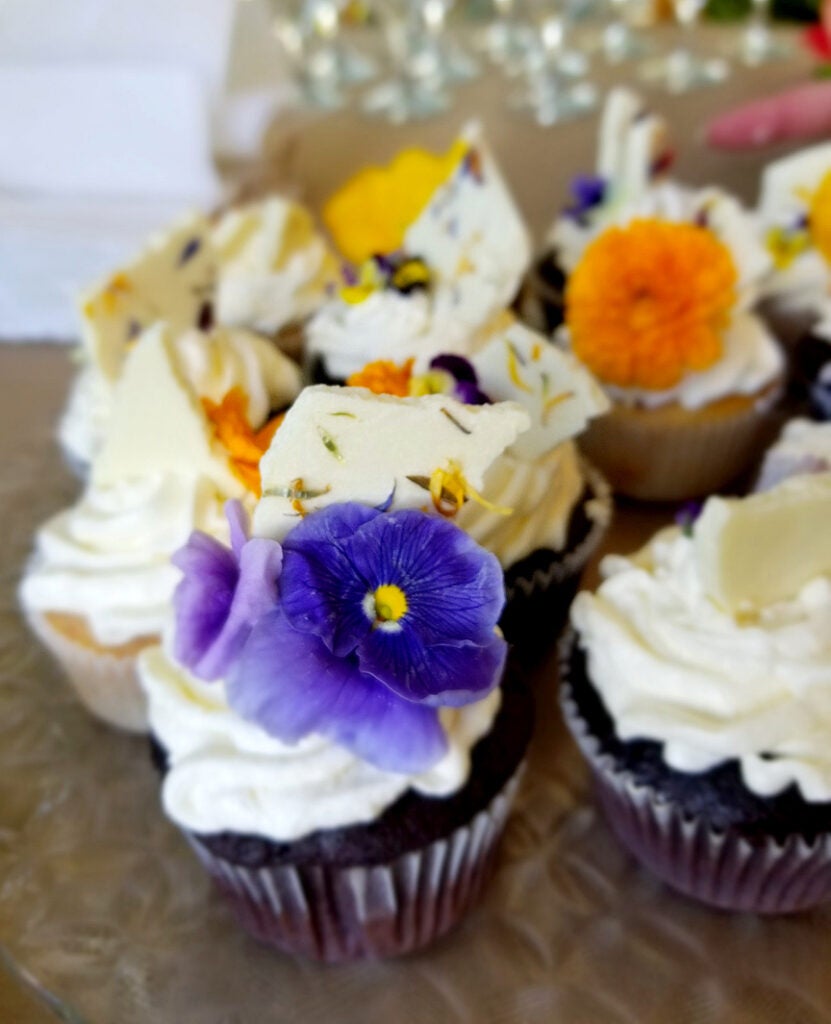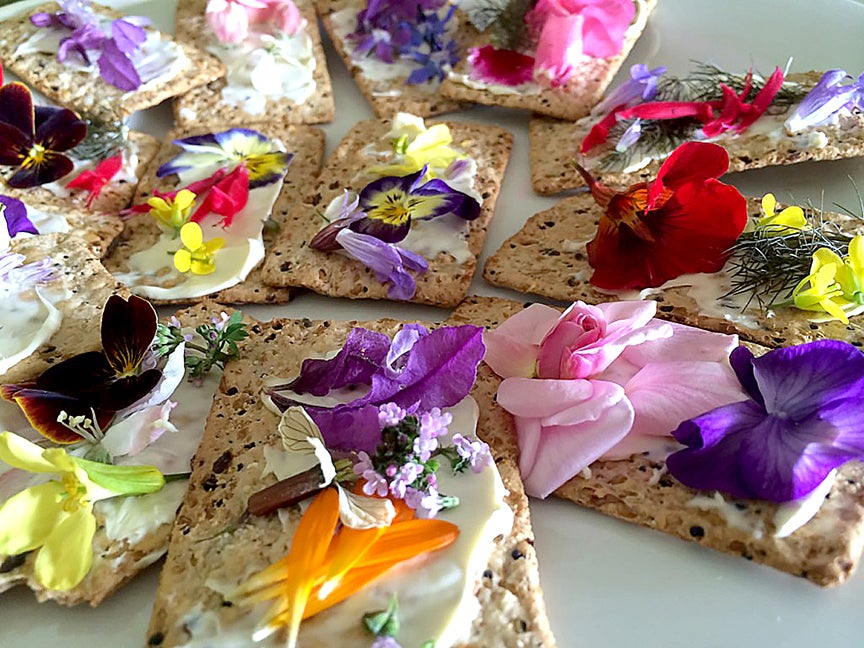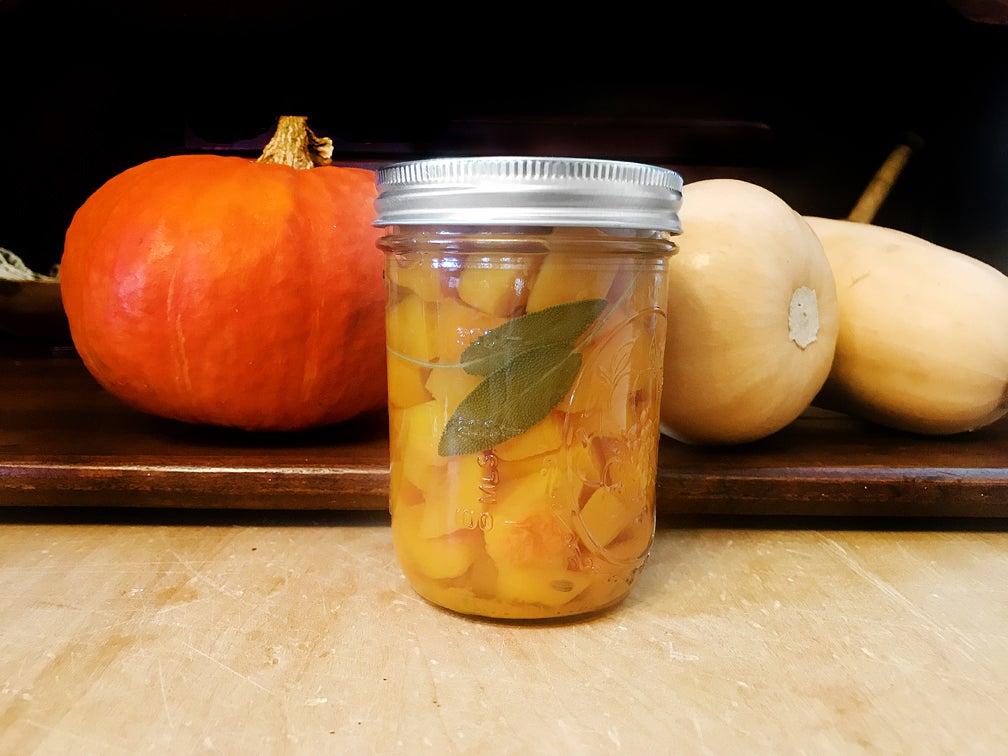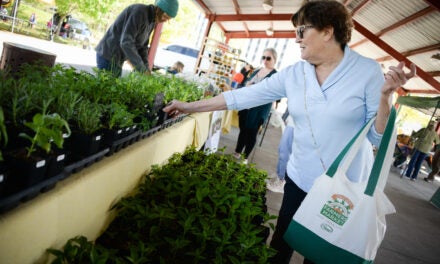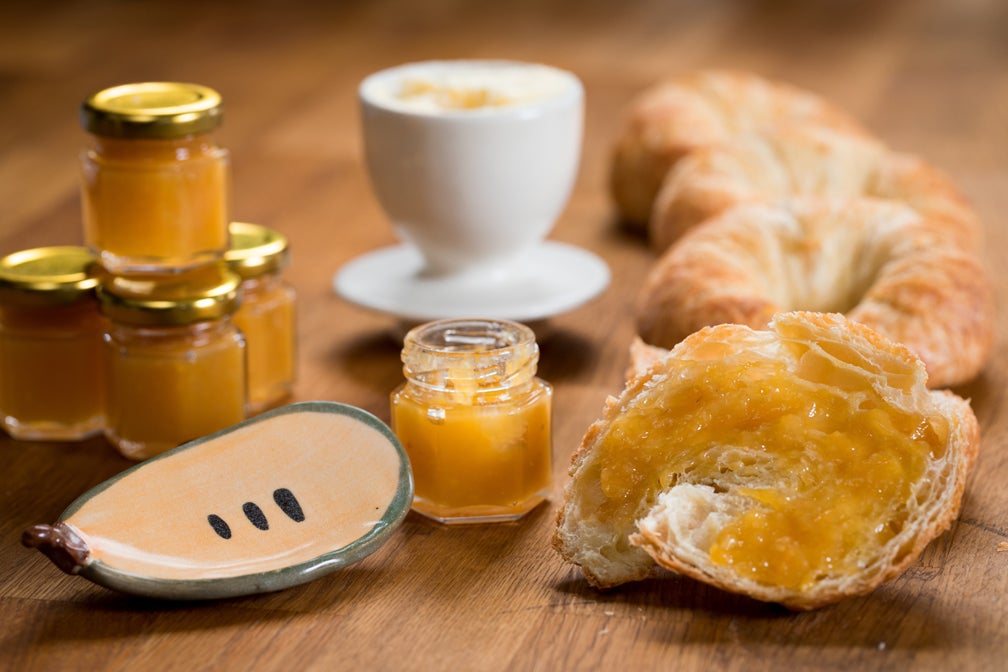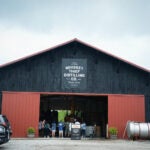In the words of the old poem — “Spring is sprung, the grass is riz/ I wonder where the flowers is.”
If you are willing to get creative, said Jennifer Wilson with Wilson’s Nursery, you can find them in your food.
Flowers in baking is all the rage on cooking shows these days, but for Wilson, cooking with flowers has been something she’s done for years. While the COVID-19 pandemic disrupted her “Cooking with Flowers” class last year, her love of teaching others about edible flowers hasn’t waned.
Flowers add not just color and decorations, she said, but their own distinctive flavor.
For the beginning gardener interested in edible flowers, she suggested growing nasturtium.
“They are easy to grow and you can use every part of the nasturtium,” she said. “They can be sweet, but they can also have a slight pepper taste to them.”
And cooking with edible flowers doesn’t have to be complicated, she said. You can throw them in salads with your greens for a pop of color, or press them into rolls of goat cheese.
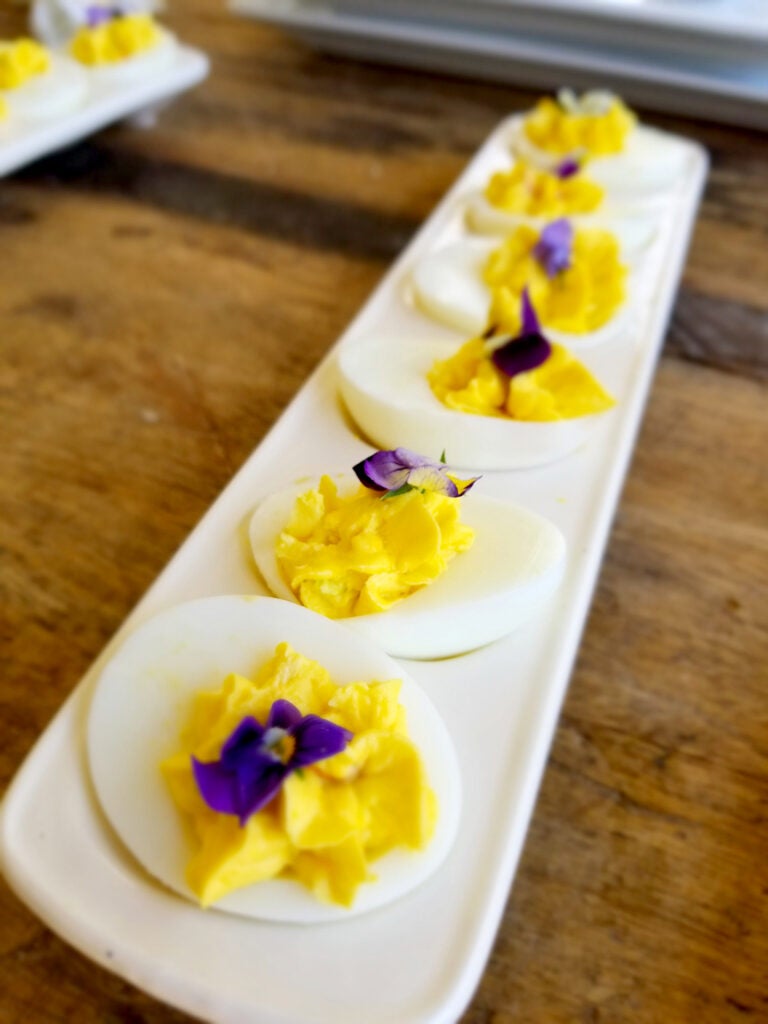
Another easy to grow in the garden suggestion is calendula, she said.
“They can be a little more bitter, a little tangy,” she said. “It’s common to find them in baked goods or omelets or biscuits.”
And according to Gardening Know How, they can be used to stimulate the immune system.
The small, delicate petals are great for flavored butters, she said. Simply soften the butter, and add the petals to the butter, before shaping into a log and chilling.
One very popular flower for baking with right now is lavender. Watch any baking competition for long enough, and you’re almost guaranteed to see someone make a lavender macaron or lavender biscuits with a lemon berry jam. According to the Food Network, lavender goes well in sorbets, orangeade, cookies, glazes and even sparkling wine.
Wilson said she likes lavender in shortbread cookies or a Russian tea cake.
Wilson’s Nursery provides customers who ask about edible flowers with a sheet detailing which flowers are edible and what they can be used in. One of the recipes she provides is Caramelized Peaches with Lavender Cream.
The flowers of almost every herb are also edible, and each one gives a distinctive flavor to dishes, Wilson said. From borage — whose inner purple flowers taste like cucumbers and go well with veggie and fruit salads— to thyme —whose tiny flowers can be sprinkled on salad, soups and sauces — there are any number of options for experimenting with flowers in your cooking.
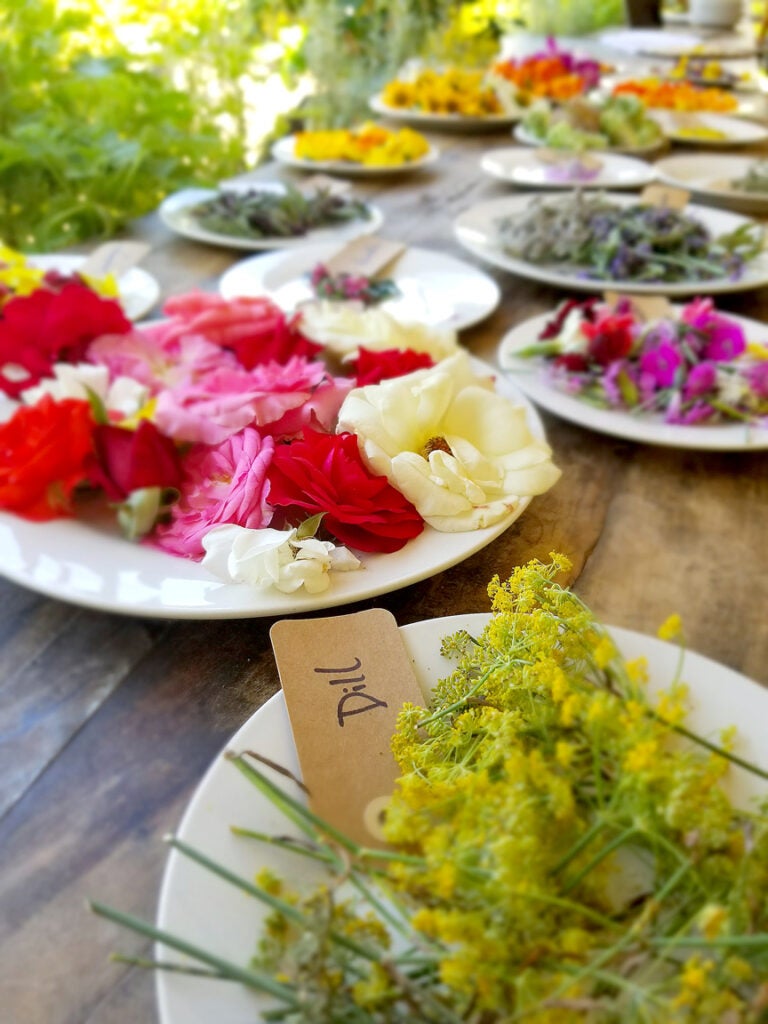
Wilson said it’s easy to make flower sugars too. By combining edible flowers with sugar in a food processor, you’ll be able to create a colored sugar that imparts the flavor of the flower into whatever you put the flower sugar in — like an orange blossom sugar in a cup of English Breakfast tea.
Surprisingly, a flower almost everyone has in their landscape — daylilies — can be used in cooking too. Daylilies and flowers like squash blossoms are large enough to stuff with ricotta or a meat stuffing and then be baked or fried. The slightly sweet nectar taste adds a taste element, while the flower itself adds a visual appeal like no other.
To use flowers in cooking like those contestants on The Great British Baking Show and the Spring Baking Championship, you don’t have to be a level seven chef with mad decorating skills. You just need to go out into your garden, with Wilson’s chart of what’s edible, of course, and give the flowers a taste.
Wilson says the best time for cooking with flowers is in July or August when the flowers are abundant. But for some, now is as good a picking time as any.
Caramelized Peaches with Lavender Cream
(recipe courtesy of “Cooking with Flowers,” by Miche Bacher)
Ingredients:
1/4 cup (1 stick) unsalted butter at room temperature
3/4 cup sugar
6 mint leaves
1 1/2 tsp lavender buds (from 2 sprigs)
6 peaches, halved and pitted
2 cups lavender simple syrup or lavender whipped cream for topping.
Directions:
Preheat oven to 400 degrees. Line a baking sheet with parchment paper.
Smash butter, sugar, mint leaves and lavender buds together with a fork, mashing well. Spread the cut side of each peach half with butter mixture. Place the peaches cut side down on the prepared baking sheet. Bake for about 20 minutes, or until they are semisoft and yield easily to a fork. Arrange the peaches cut side up in serving bowls. Top with lavender simple syrup or lavender whipped cream.
Lavender whipped cream
2 cups very cold heavy cream
1 TBSP lavender buds or 2 tsp lavender simple syrup
1/2 tsp pure vanilla extract
1/4 cup confectioners’ sugar
Put heavy cream, flower petal (or flower syrup), vanilla and confectioners’ sugar in a large mixing bowl. Chill for at least 30 minutes or overnight. Strain out the petals. With a mixer fitted with the whisk attachment, whip the mixture on high speed for 3 minutes, or until it forms soft, billowy peaks. Serve immediately or refrigerate for up to 4 hours. Makes four cups.
